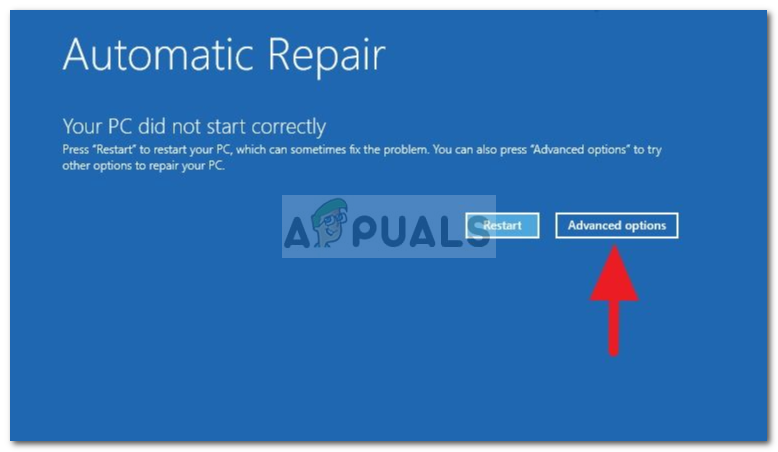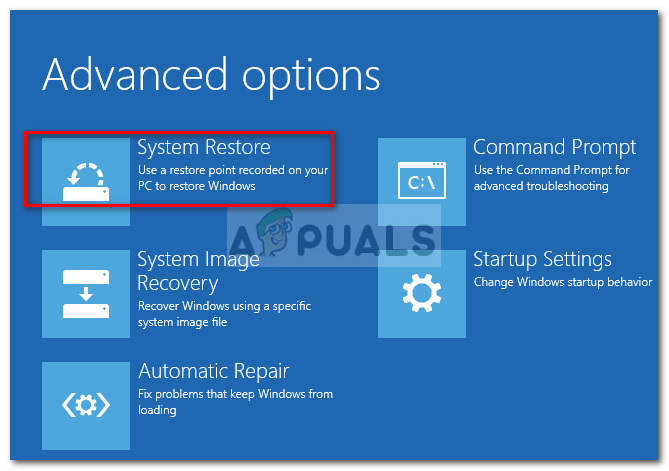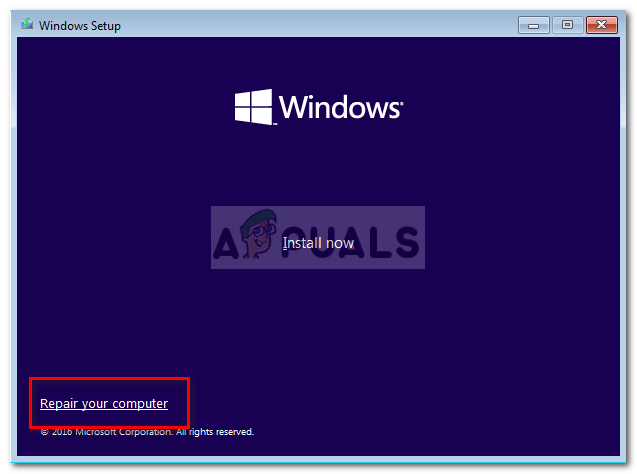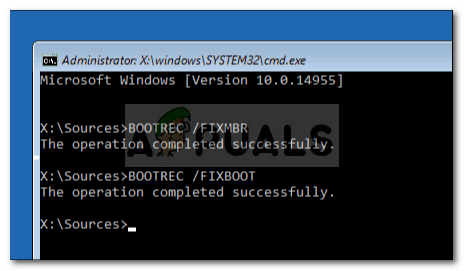Fix: Automatic Repair Your PC did not Start Correctly
The ‘Your PC did not start correctly’ error is often caused by corrupted MBR or BCD file due to which your Windows will not boot up. When you turn on your system, normally your Windows boots up and you are taken to the Desktop screen, however, in this case, you are left but with a message box that lets you restart your system or navigate to Advanced options.
In some cases, the problem is easily solved by Windows Automatic repair when you restart your system, however, that is not bound to work for everyone. If your error persists even after multiple boots, this means your MBR is corrupted. In such a scenario, you can apply the following solutions to fix your issue.

What causes the Automatic Repair ‘Your PC did not start correctly’ error on Windows 10?
Since the error is sudden, it can be caused by one of the following factors —
- Sudden power failure. If the error is appearing after a sudden power outage, that can very well be the cause of the error. Power failures are known to cause such issues.
- PC Upgrade. In some cases, a recent PC upgrade can also cause the issue. The upgrading process might have corrupted the MBR file due to which you are encountering the error.
- Third-party application or a recent hardware change. Sometimes, a third-party application or a recent hardware change on your system can cause the error to pop up in which case you will have to run a system restore. This is quite rare but still a possibility.
You can solve this error by following the given solutions with some luck on your side.
Solution 1: Running System Restore
As we mentioned, in some cases a third-party application installed on your system can cause the error to occur. In such scenarios, you will have to opt for a System Restore. A System Restore will restore your system to a point back where the error didn’t occur. Hence, this will eliminate the possibility of a third-party application causing the error. Here’s how to do it:
- On the Automatic Repair message box, click ‘Advanced Options’.

Access Advanced Options by Clicking Advanced Options - Choose ‘System Restore’ and go through the process.

Choosing System Restore from Advanced options
Also, it is important to note that in some cases restoring your system to a certain point doesn’t fix the issue. In such a case, please try restoring your system to a point even back to see if that helps.
Solution 2: Repair System using a Bootable USB/DVD Drive
Sometimes, when the Windows Automatic Repair doesn’t get the issue fixed, repairing your system from the Windows Recovery Environment (WinRE) might work. For this, you will require a bootable USB, CD or DVD drive — either will do the job. Here’s how to do it:
- Insert your bootable drive.
- Boot from the bootable drive.
- Once the Windows Setup window appears, click ‘Repair your computer’ on the bottom left of the window.

Repairing Windows from WinRE - Go through the process and see if it helps.
Solution 3: Repairing System Files using the Command Prompt
If the above solutions don’t work out for you, you can try repairing the MBR file using the command prompt. Master Boot Record or MBR informs your system about the location of the operating system. Damaged MBR or Boot Configuration Data (BCD) is usually the cause of the error. Here’s how to repair them using the command prompt:
- Click on Advanced Options on the Automatic repair message dialogue.
- Select ‘Command Prompt’ to open up a command prompt.

Choosing Command Prompt from Advanced Options - Type the following commands one-by-one:
-
Bootrec /rebuildbcd
- Afterward, enter the following commands:
Bootrec /fixMBR Bootrec /fixboot

Fixing MBR and Boot - Once the processes have completed, exit the command prompt and restart your system.
- See if the error has been fixed.
Solution 4: Reinstall Windows
Finally, if none of the above solutions fix your issue, you are left with one option only. You will have to reinstall your Windows. You are going to lose all the files on your system drive but that’s just how it is going to be if you want to use your system again. There’s no other way of fixing the issue.




